Day 6 - Lizuka, Kyushu 108 Temple Pilgrimage, Japan
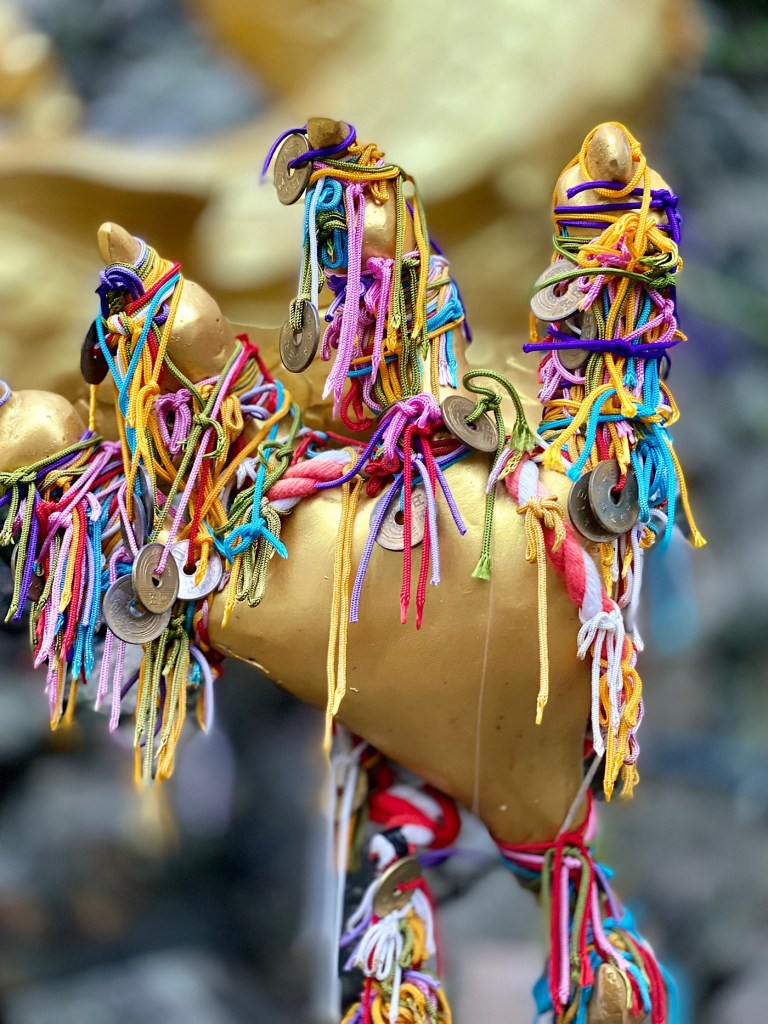
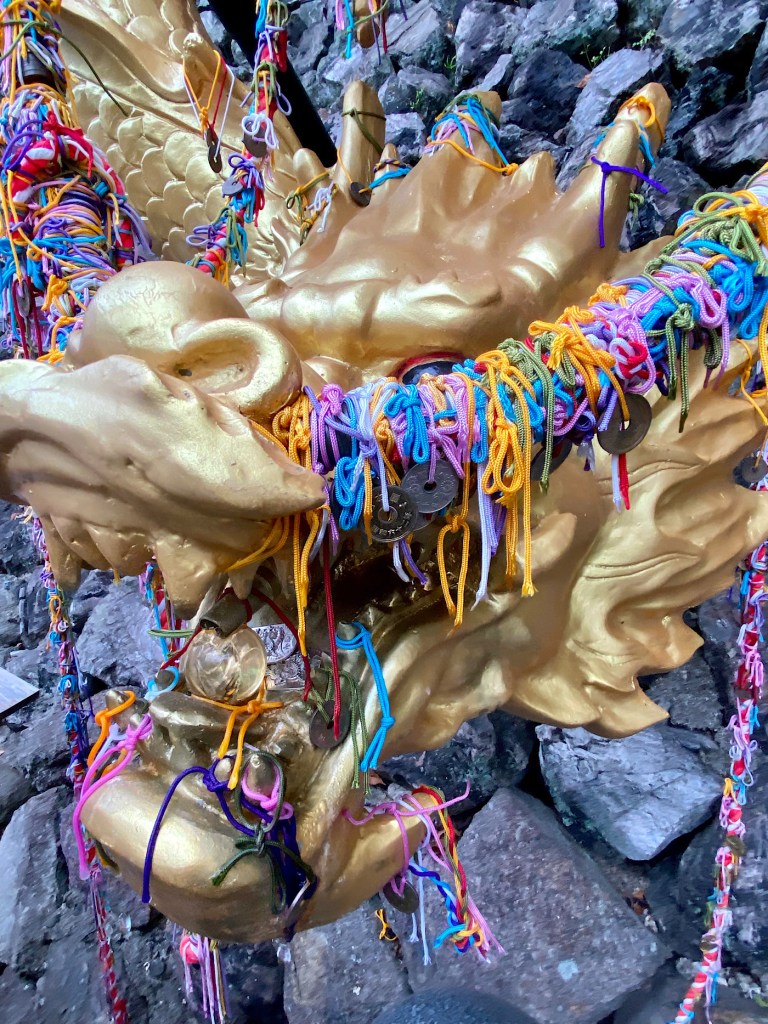






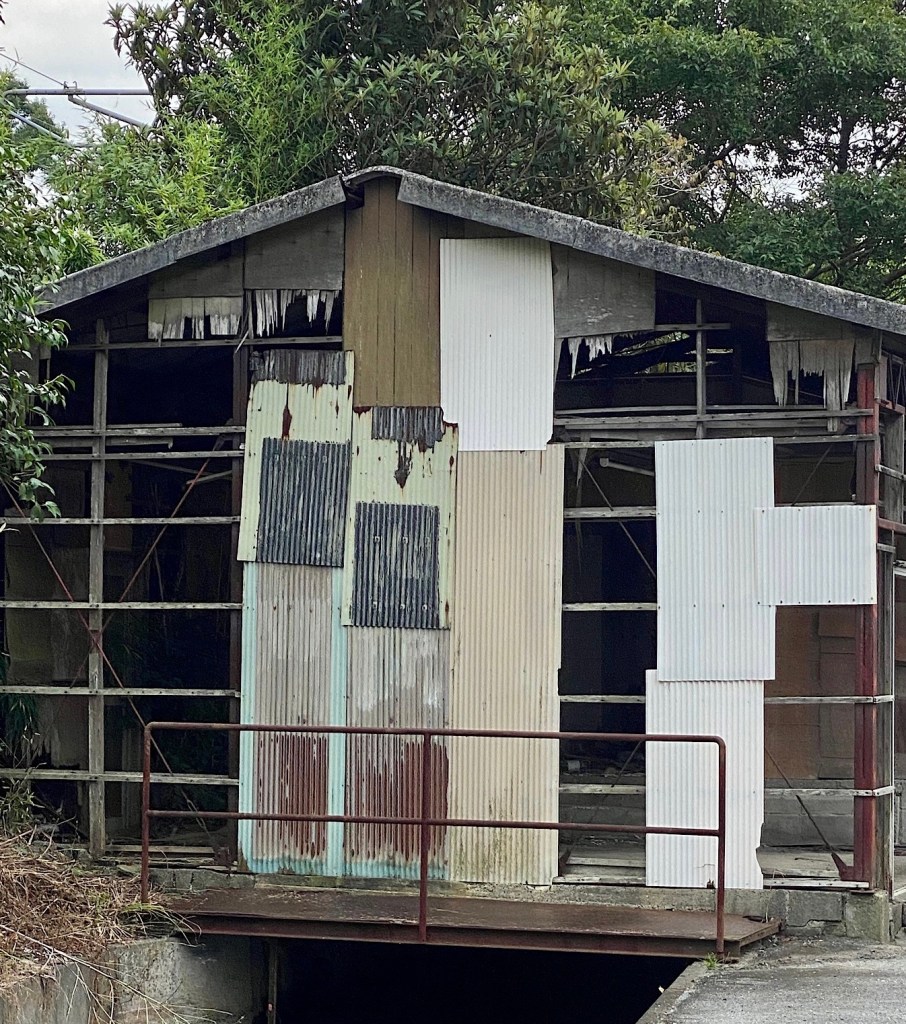


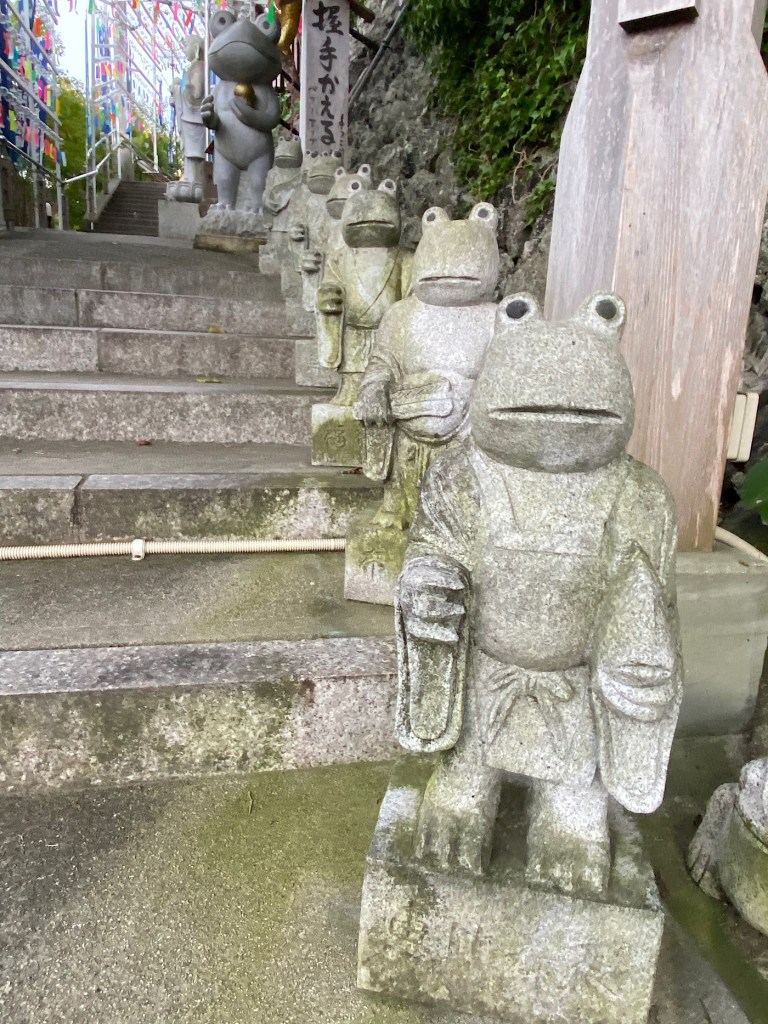


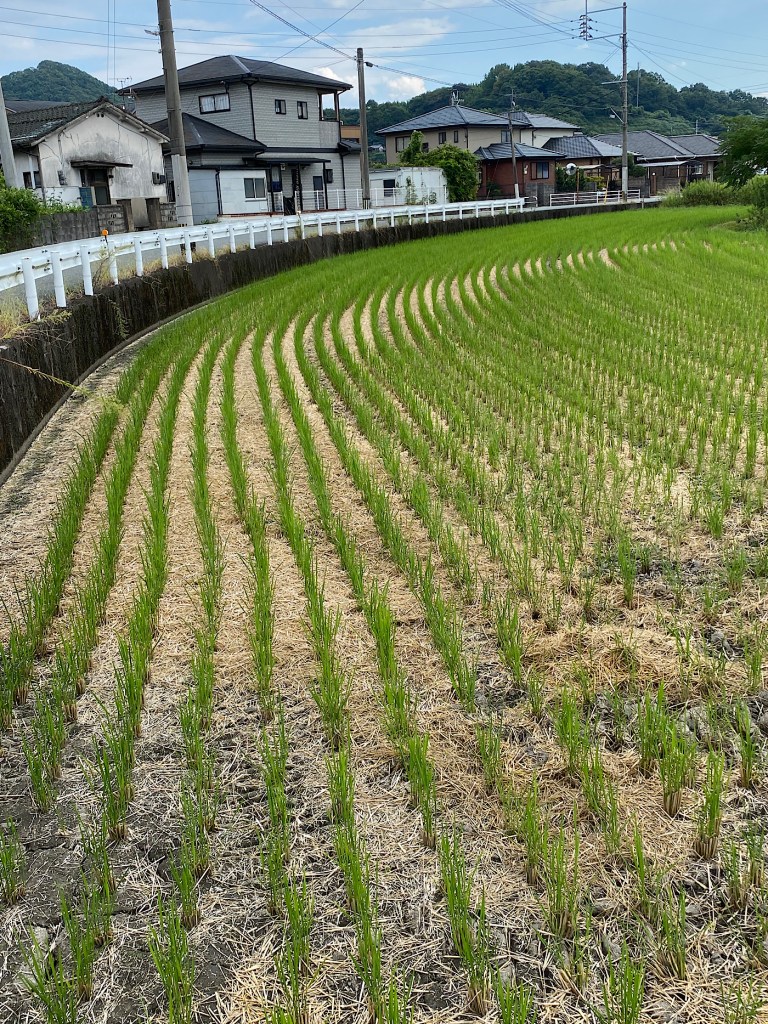








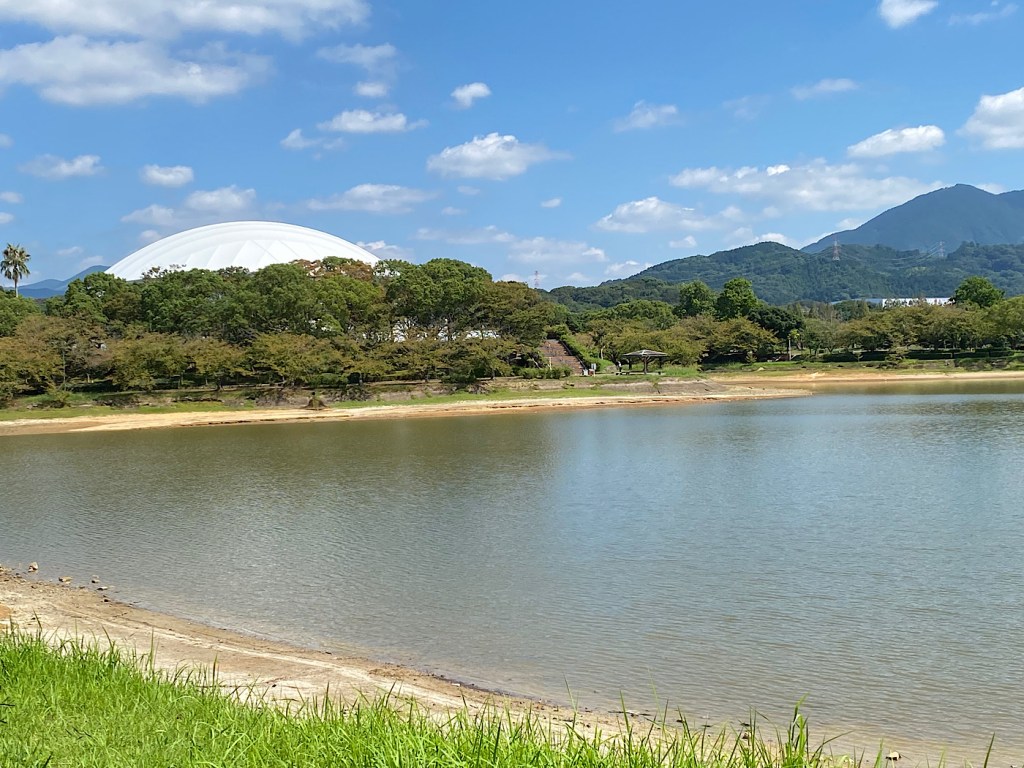
Day 6 - Lizuka, Kyushu 108 Temple Pilgrimage, Japan
In the town of Lizuka, we have to visit four temples that are within walking distance of one another.
We also have to walk the distance between Lizuka and Sasaguri, which is the last place we got to from the town of Umi.
For the sake of a more efficient pilgrimage, we should have climbed today up Mount Wakasugi in Sasaguri, and visited the two temples on that mountain.
But I am still adjusting to being on my feet all day, and we also needed to check out of our hotel and store our backpacks, before checking into our Ryokan (Traditional Japanese Inn) in Sasaguri.
This meant that we would have had less time to go up and down the mountain.
So instead, I opted for an easy day of walking.
In Shin Lizuka, we stored our backpacks in a coin locker at the train station and walked to the first temple, Hozenji temple #13 (also known as Mt. Korin, Hozenji.)
At Hozenji, we rang the bell but the lady didn’t come out to stamp our book and scroll.
She explained over the intercom that all the stamps and papers were placed outside the front door of the (locked) main hall, and that we should do it ourselves.
The main hall was locked, but inside it there was a standing statue of the goddess Kannon, who has eleven faces and a thousand arms.
It is made of wood, covered in gold leaf.
It is enshrined in the kitchen of the lady’s house, but once a year, it is open for the public to view, on the day of Kagamibiraki (January 20.)
Fudo Myoo, Jizo Bosatsu, and Kobo Daishi statues are worshipped alongside the Buddhas.
We stamped our book and put the money in a rusty open tin can, with a sign that said “money toll.”
It was a hot day and the walking was through a downtown that was mostly empty of people and full of closed shops.
Many of the shops looked like they were permanently closed.
It wasn’t a good start to the day… a closed temple and an empty town with empty, dusty shops…
This is what is happening in many small towns in rural Japan.
Once, if you had walked down these streets when the sweet old ladies and men were still running their businesses, it would have been a charming experience.
Some shops would have sold hand made purses and aprons, decorated Noren curtains that Japanese people traditionally hung in front of their homes, handmade Wagashi sweets decorated beautifully according to the season, clothing, shoes, hats, fruits and vegetables, ceramics, green tea, books, soba noodles, and all sorts of handmade crafts.
The old men and women have passed away, and their children, if they had any, have no interest in working hard for almost no money, living in a small town that has no entertainment, no tourism and is mostly closed.
We continued walking to the second temple of the day, Temple #11 Mt. Konpira Myokan-ji, which is located up a small hill.
This Temple has been known since ancient times as a place for acupuncture and moxibustion.
Moxibustion is a traditional Chinese medicine therapy which consists of burning dried mugwort on particular points of the body.
It is commonly practiced as a traditional medical treatment in China, Japan, Korea, Vietnam, and Mongolia.
The mugwort plant (also known as Artemisia vulgaris, riverside wormwood, felon herb, chrysanthemum weed, wild wormwood, old Uncle Henry, sailor's tobacco, naughty man, old man, or St. John's plant) is dried and then ground into a powder.
Practitioners burn the powder or process it further into a cigar-shaped stick.
They can use it indirectly, with acupuncture needles, or burn it on the patient's skin.
Many patients visit this temple seeking relief from lower back pain and neurological disorders.
The principal image of worship is a white Kannon called Takao Hakui Kannon.
It is believed to be a goddess of prosperity and salvation.
It is said that King Gao, who ruled the country of Wei, and the people in the country, prospered by believing in this white Kannon.
It is an ancient temple where in the 9th century, Kobo Daishi visited the chief priest, and gifted him with relics of tiles unearthed from the ruins of Seiryu-ji Temple in Xi'an, China, the ancient home village of the Shingon sect.
The relics are a rare treasure in Japan.
The temple had a rock and raked pebble garden in the front.
I love these rock gardens where the pebbles are raked in patterns that resemble waves, lakes and enlightenment.
The monk in charge had really nice vibrations and was super nice.
He was also very shy and spoke no English.
He asked where we are from and said that he knew about Colorado, from the songs of John Denver.
He gave us cookies and green tea when we departed.
During our walk to the third temple of the day, thirsty and overheated, we stopped at a lifestyle shop and bakery to have matcha slushees and a rest.
The third temple of the day, Mt. Hoba Kinkura-Dera Temple (Honami-san, Kinsoji) Temple #12, is a quiet temple in a residential neighborhood with an ancient shrine next to it called the Kifune Shrine.
This temple is located to the south of Iizuka City, between the Kama River and the Honami River, which are tributaries of the Onga River.
It is fertile land for rice farming around this delta of rivers.
It was lovely walking among the rice fields instead of empty stores, and my spirit cheered up.
We could see the remains of the coal factories.
During the coal boom period in the early-modern times, this river was the main route of transport, and there was the bustle of traffic jams, when busy river boats approached each other.
It is said that an ascetic monk called Ryushin Watanabe, visited Kinkura-ji Temple and slept the night at the adjacent Kifune Shrine.
He woke up with an intuition that a plague would be spreading in the village and killing many.
He founded the Kannon-do Hall in the temple and made prayers for the villagers' health.
Stone Buddhas are spread around the temple grounds and statues of the thirteen Buddhas are enshrined under one roof.
A Fudo Myoo is enshrined on the hill in the center, and there are Tang-Dynasty style Rakan statues.
The lady at the office chatted with us about walking the pilgrimage, about the heat, and about where we were from.
She gave us Japanese jellies, which are made not from gelatin, which is collected from boiling animal bones, but from agar seaweed.
Before reaching the fourth temple, we stopped for lunch at a family soba restaurant.
It was one of these special places that you only find in Japan.
The owner was a big man with an even bigger heart.
His restaurant was a comfortable renovated farmhouse, and everything was made by hand.
In Japan, the better soba noodle restaurants make their soba noodles every day, and after you eat the soba, they give you a teapot filled with the water the soba was boiled in, as a comforting tea to drink after the meal.
When you eat in these kinds of restaurants in Japan, you don’t just get a meal. The people put so much artisanal effort into the food, that the vibrations of their sincerity and effort to provide customers with the very best, goes into the food and makes simple meals taste sublime.
We had superb soba noodles served with tempura of vegetables he grew in his garden and a slice of sweet river fish.
The owner was really happy to chat with us and made us feel at home.
He showed us an English card with illustrations explaining how to eat soba.
Of course we already knew how soba is eaten and even once learned to make soba from scratch in a farm restaurant, but we didn’t tell him that.
When we got ready to leave and walk to the last temple, he offered to drive us there.
When we refused, he offered us a free umbrella which we also refused, since we carry with us very light folding umbrellas.
The light rain stopped within minutes and we walked to the fourth temple of the day, Kogaerutera Rurizan Shoho Temple #93.
It is the first temple that we saw other people who came to worship.
The temple is up a small hill overlooking the city of Lizuka..
It has more than 5000 statues of frogs inside and around the grounds.
They also had a bubble machine at the front, spewing big bubbles which made me happy.
It was lively and a warm temple. The monk gave us cookies with frog imprints.
The principal image of worship is Yakushi Ruriko Nyorai, and its history dates back to the Edo period, and it was said to be a sacred place of the Yakushi faith in the region, before the Meiji period.
At the entrance, you can see a large Nio guardian statue.
The temple is located in a city that once flourished with coal mines, and there is a tunnel of the Chikuho coal mine near by.
When we got ready to leave, the priest gifted us with cookies with the imprint of a frog on them.
This is the Japan I came to experience.
Soulful eateries, attention to detail, hard working yet cheerful people who are happy to make a simple living, not hoping for the lifestyle of the rich and famous, but knowing that happiness is an internal process and a journey to contentment…
With love,
Tali
Stats: 18,643 steps
Today’s walk: 12.5 km
Kilometers walked to date: 118
Temples visited:
Temple #T13 Hozenji 法善寺
Temple #11 Meikanjireien 明観寺
Temple #12 Kanakuraji 金倉寺(真言宗醍醐派)
Temple #93 Kogaeru- Dera Rurizan Shoho Temple 正法寺